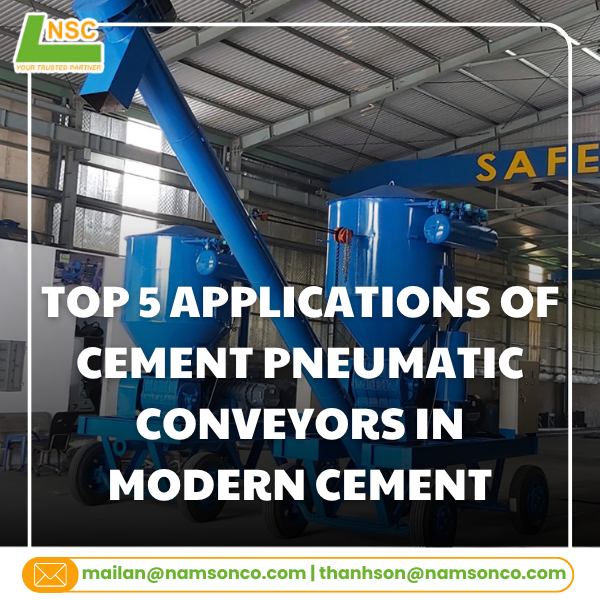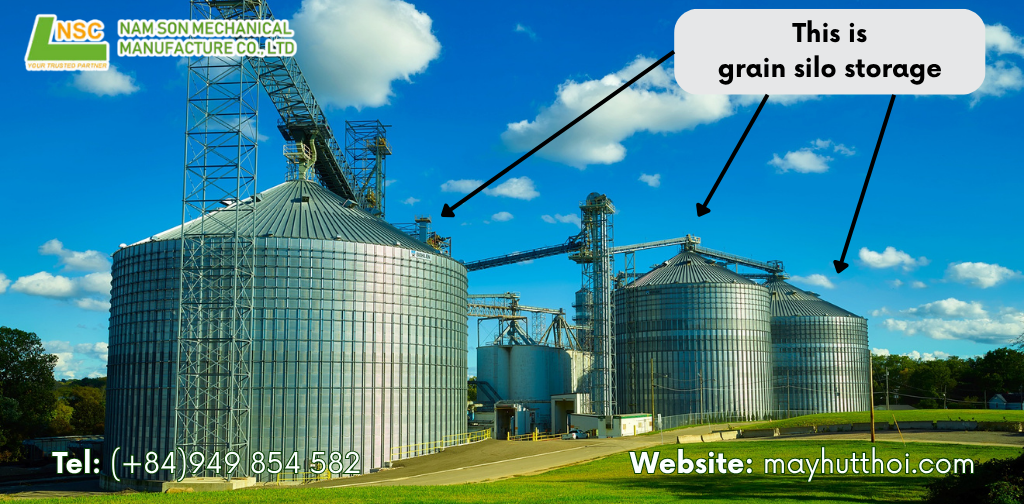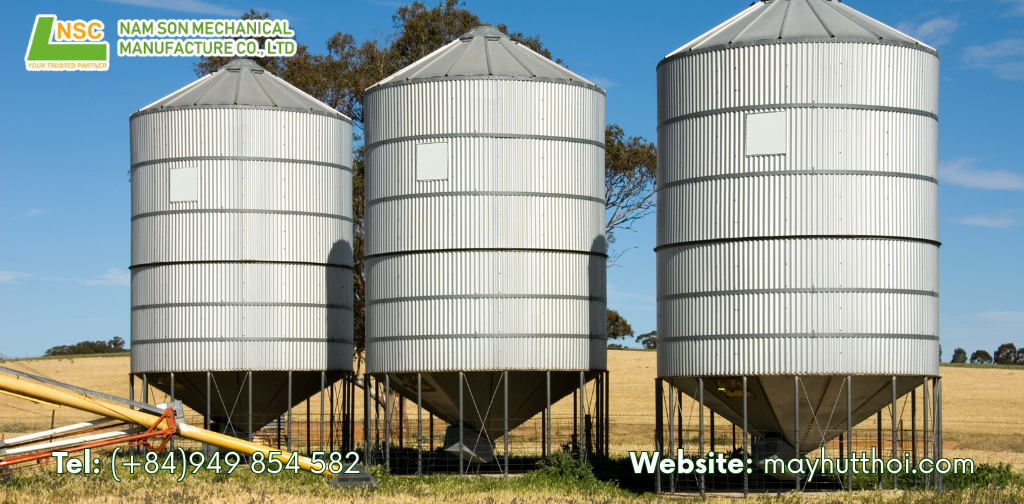


Choosing between flat-bottom grain silos vs hopper-bottom grain silos can greatly impact your grain storage efficiency, costs, and grain quality. This guide breaks down the key differences, real-world applications, and expert tips to help you make an informed decision.
A grain silo is a storage facility used to preserve grains after harvest, commonly for wheat, corn, rice, barley, soybeans, and other agricultural products. The primary purpose of a grain storage silo is to maintain the grains in controlled conditions, such as a temperature-controlled silo and a moisture-controlled silo, thereby preventingpests, spoilage, and post-harvest losses.
Among the various types of steel grain silos available, the two most widely used designs are flat-bottom grain silos and hopper-bottom grain silos. While both serve the same primary function, grain storage, they differ significantly in terms of structure, cost, operation, and practical applications.
This article will provide a detailed comparison of flat-bottom grain silos vs hopper-bottom grain silos, analyzing their advantages and disadvantages, and helping you decide which option best suits your needs.
SEE MORE: Grain silo storage basics every agribusiness should know

A flat-bottom grain silo has a flat base, typically constructed from galvanized steel or coated steel for corrosion resistance. This vertical silo design can be built in capacities ranging from a few hundred tons to tens of thousands of tons.
Flat-bottom silos are widely used for long-term storage of grains such as wheat silo, barley silo, rice silo, soybean storage silo, or for large-scale commercial grain storage facilities.
oLarge storage capacity, cost-efficient per ton.
oIdeal for long-term storage (6–18 months).
oEasy integration with aeration systems, temperature control, and pest-proof silo features.
❖Requires a grain unloading system such as a grain sweep auger or grain conveyor silo.
❖More difficult to clean because the flat base can leave grain residues.

A hopper-bottom grain silo has a conical base supported by a sturdy steel frame. This design allows grains to flow out naturally through gravity unloading, directly into trucks or conveyors.
Best suited for corn silo, feed silo, seed storage silo, or as a portable grain silo for transfer stations with frequent grain movement.
oFast unloading speed, minimal grain residue.
oReduced operating time and labor costs as no additional unloading machinery is required.
oEasier cleaning lowers the risk of grain spoilage.
❖Smaller capacity compared to flat-bottom silos.
❖Higher initial construction cost.

The main difference between a flat-bottom grain silo and vs hopper-bottom grain silo
| Criteria | Flat-bottom grain silo | Hopper-bottom grain silo |
|---|---|---|
| Unloading | Requires a grain auger system or a grain conveyor | Gravity unloading is a faster process |
| Storage duration | Long-term (6–18 months) | Short/medium-term (weeks to months) |
| Investment cost | Lower per-ton capacity | Higher upfront but lower operating cost |
| Cleaning & maintenance | Harder to clean | Easier to clean, less residue |
| Maximum capacity | Larger, suitable for bulk storage | Limited, best for medium capacity |
| Primary applications | Commercial storage, export, and national reserves | Transfer stations, feed mills |
Choosing the right grain silo is not just about preference; it requires careful evaluation of your storage needs, grain type, operational flow, and budget. The following breakdown will help you make an informed decision.
+Large-scale rice exporter: Uses a flat-bottom grain silo with a 10,000-ton capacity, integrated with moisture control silo and temperature monitoring systems for long-term preservation. Grain is dispatched via a grain conveyor silo when needed.
+Animal feed processing plant: Chooses a hopper-bottom grain silo with 500–1,000-ton capacity for gravity unloading on a daily basis, reducing waiting time, labor, and ensuring fast turnover of raw materials.
–Type of Grain: For long-term storage, such as wheat, rice, barley → flat-bottom; for short-term storage, such as corn or seeds → hopper-bottom.
–Volume & frequency: Large volume, infrequent unloading → flat-bottom; moderate volume, frequent unloading → hopper-bottom.
–Budget & infrastructure: Limited budget, larger land area → flat-bottom; limited space, need for fast unloading → hopper-bottom.
–Climate: Hot and humid climates require temperature-controlled silo and aeration systems for both types.
If you aim to maximize cost efficiency per ton and store grain for extended periods, the flat-bottom grain silo is your best option. However, if you prioritize unloading speed, easy cleaning, and frequent dispatch, the hopper-bottom grain silo is more suitable.
A smart storage strategy is to combine both types:
×Flat-bottom for bulk reserve storage.
×Hopper-bottom for transfer or quick delivery operations.
Regardless of your choice, investing in pest-proof silo, moisture monitoring, and temperature control systems will maintain grain quality throughout storage.
Q1: Which grain silo lasts longer?
→ Both can last decades with proper maintenance, but flat-bottom silos generally have a longer lifespan.
Q2: Can hopper-bottom silos store grain long-term?
→ Yes, if equipped with proper temperature and moisture control systems, but they are less optimal for very long-term storage.
Q3: Are flat-bottom silos difficult to clean?
→ Yes, more so than hopper-bottom silos because flat bases tend to retain grain residues, requiring specialized cleaning equipment.
The choice between flat-bottom grain silos vs hopper-bottom grain silos depends entirely on your storage needs, grain type, and operational setup. Understanding the characteristics of each grain silo type will help you optimize storage costs, improve preservation efficiency, and ensure the quality of your agricultural products.
Looking for the perfect grain silo solution? Contact our experts today for a free consultation and customized storage recommendations.
✱ Website: mayhutthoi.com| namsonco.com
✱ Alibaba:dthson.trustpass.alibaba.com
✱ Facebook: facebook.com/NamSonPneumaticConveyor
✱ Zalo/Whatsapp:(+84) 949854582
✱ Email: mailan@namsonco.com | thanhson@namsonco.com
Copyright © 2016 Nhuamisa